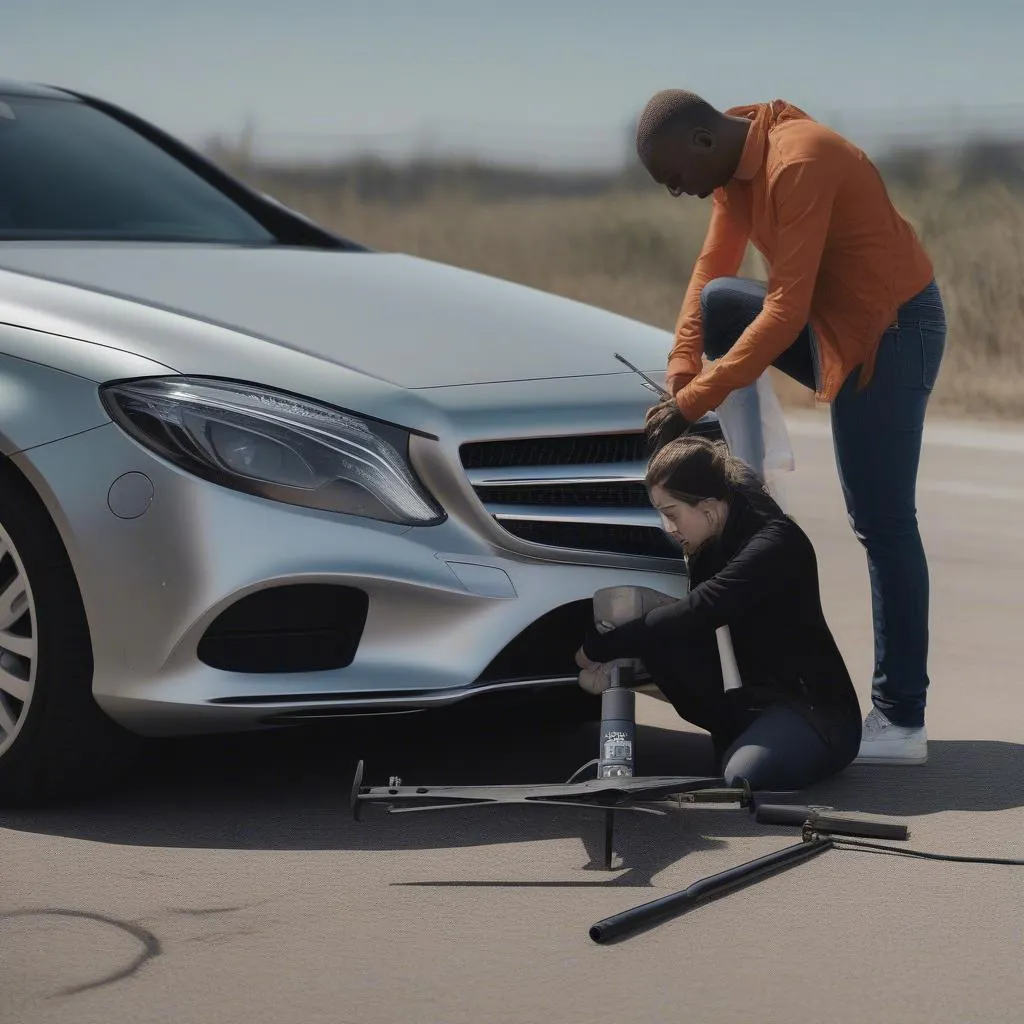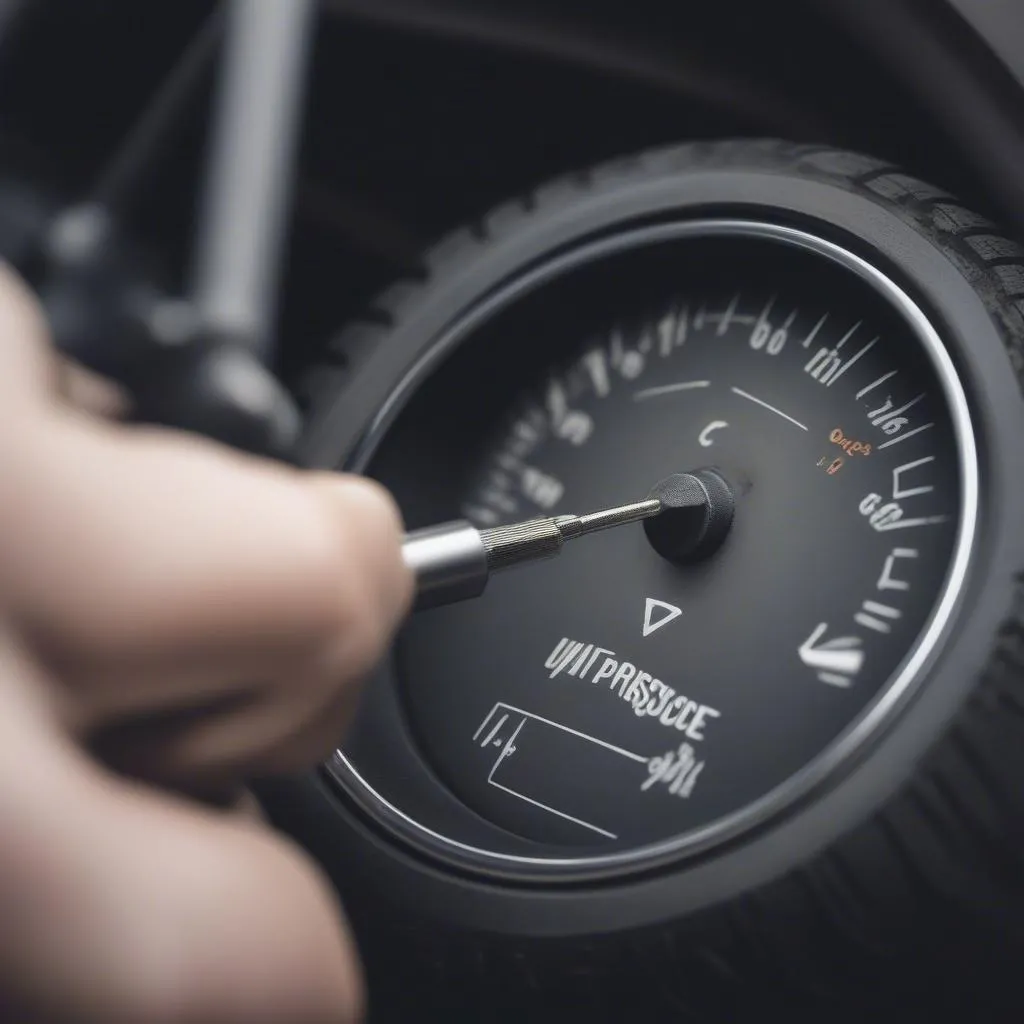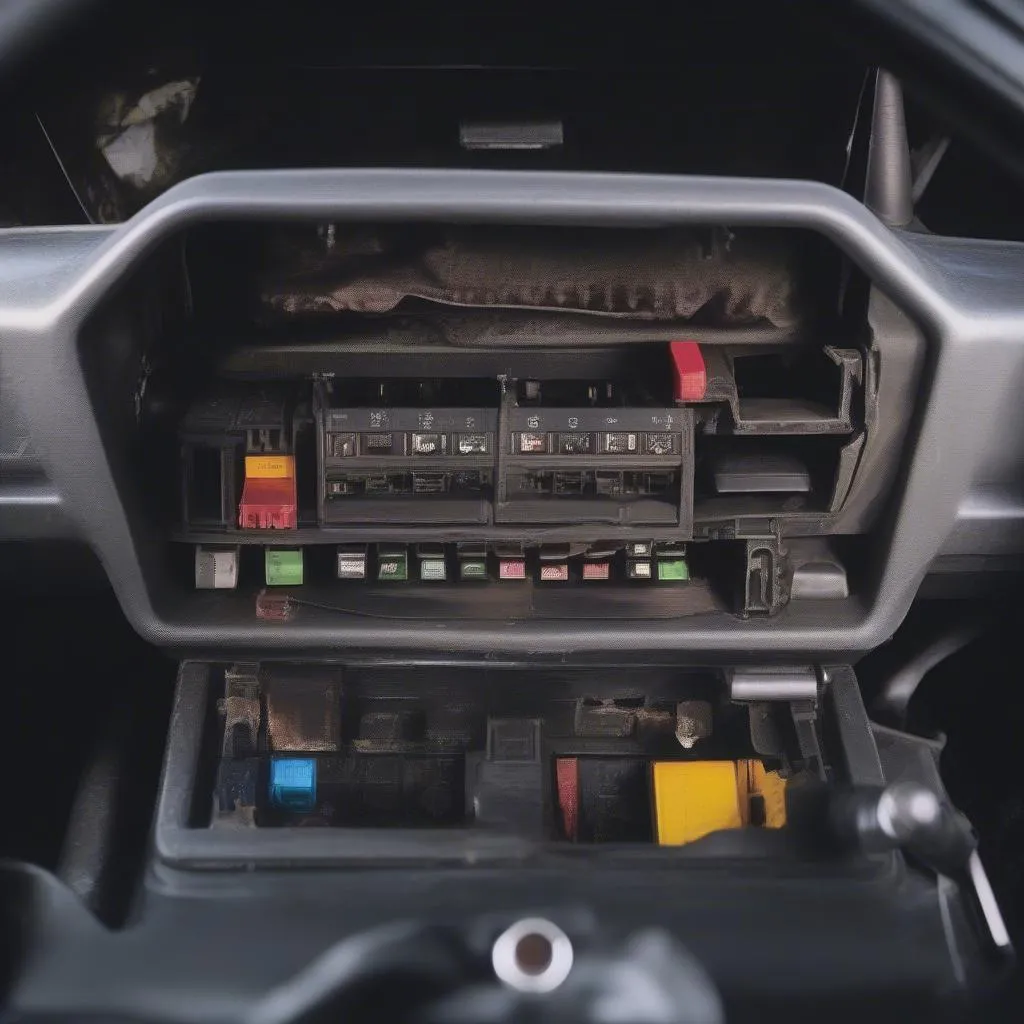Getting a flat tire is never convenient, especially when you’re driving a Mercedes. But don’t worry, with a little know-how, you can get back on the road in no time. This guide will walk you through the steps to safely and effectively fix a flat tire on your Mercedes.
Understanding Why You Got a Flat
Before we dive into the fix, it’s helpful to understand what caused the flat. Common culprits include:
- Punctures: Sharp objects like nails, screws, or glass can pierce your tire, causing a slow leak or a sudden flat.
- Impacts: Hitting potholes, curbs, or other road hazards can damage the tire sidewall, leading to a flat.
- Valve Stem Issues: A damaged or loose valve stem can cause air to escape from your tire.
- Wear and Tear: Over time, tires naturally wear down. If the tread is too worn, it’s more susceptible to punctures and flats.
Recognizing the Signs of a Flat Tire
Identifying a flat tire quickly is crucial for your safety and the well-being of your Mercedes. Watch out for these telltale signs:
- Low tire pressure warning light: Your Mercedes dashboard will usually display a warning light if one or more tires have low pressure.
- Pulling to one side: A flat tire can cause your car to pull in the direction of the flat, especially at higher speeds.
- A thumping or flapping sound: You might hear a rhythmic thumping or flapping noise while driving, indicating a flat tire.
- Visible damage: If you can safely pull over, visually inspect your tires for any obvious signs of damage like punctures, cuts, or bulges.
Gathering the Necessary Tools
Before you begin fixing your flat, make sure you have these essential tools on hand:
- Spare tire: Most Mercedes vehicles come equipped with a spare tire. Ensure it’s properly inflated before you need it.
- Jack: A sturdy jack is crucial for lifting your Mercedes off the ground to change the tire.
- Lug wrench: This tool is used to loosen and tighten the lug nuts that secure your wheel to the car.
- Gloves: Protect your hands from dirt and grime with a pair of work gloves.
- Safety vest: For added visibility, especially if you’re working near a road.
- Tire pressure gauge: To check the pressure in your spare tire and the repaired tire later.
- Wheel chocks (optional): To further secure your vehicle and prevent it from rolling while you work.
 Changing a Mercedes Tire
Changing a Mercedes Tire
Fixing Your Mercedes Flat Tire: A Step-by-Step Guide
Once you have your tools ready and you’re parked on a safe, level surface, follow these steps:
- Engage the parking brake and turn on your hazard lights. This will secure your vehicle and alert other drivers.
- Place wheel chocks (if you have them) behind the rear tire opposite the flat. This adds an extra layer of safety.
- Use the lug wrench to loosen the lug nuts on the flat tire. Do this in a star pattern, turning the wrench counterclockwise. Don’t remove the lug nuts completely yet, just loosen them.
- Position the jack under the designated jacking point on your Mercedes. Consult your owner’s manual for the exact location.
- Slowly raise the vehicle using the jack until the flat tire is off the ground.
- Now, fully remove the loosened lug nuts and carefully take off the flat tire.
- Mount the spare tire onto the wheel hub, aligning the holes.
- Hand-tighten the lug nuts in a star pattern.
- Lower the vehicle using the jack until the spare tire touches the ground.
- Use the lug wrench to fully tighten the lug nuts in a star pattern.
- Lower the vehicle completely and remove the jack.
- Don’t forget to check the pressure in your spare tire using the tire pressure gauge. Inflate to the recommended pressure listed on the tire sidewall or in your owner’s manual.
 Checking Mercedes Tire Pressure
Checking Mercedes Tire Pressure
Frequently Asked Questions About Mercedes Flat Tires:
Q: Can I drive on a flat tire?
A: No, driving on a flat tire, even for a short distance, can severely damage your tire, wheel, and potentially other suspension components. It’s essential to stop driving and address the flat as soon as possible.
Q: How far can I drive on a spare tire?
A: Spare tires, especially the compact “donut” spares, are not designed for long distances or high speeds. It’s best to drive cautiously and directly to a tire shop to have your flat tire repaired or replaced. Consult your owner’s manual for specific speed and distance limitations for your Mercedes’ spare tire.
Q: My Mercedes doesn’t have a spare tire. What are my options?
A: Some Mercedes models come equipped with run-flat tires, which allow you to drive a limited distance on a flat. If you don’t have run-flats, you can use a tire sealant and inflator kit, often provided as an alternative to a spare.
Q: Where can I find reliable information about my Mercedes’ tire specifications?
A: Your Mercedes owner’s manual is the best resource for tire specifications, recommended tire pressure, and information about changing a flat tire.
Q: How can Cardiagtech help me with car issues other than a flat tire?
A: While this guide focuses on flat tires, CARDIAGTECH offers a range of products and resources for diagnosing and troubleshooting various car problems. Check out the CARDIAGTECH website for more information on their diagnostic tools and services. [link to relevant CARDIAGTECH product page].
In Conclusion
Fixing a flat tire on your Mercedes might seem daunting, but it’s a manageable task with the right tools and guidance. Remember to prioritize safety, consult your owner’s manual, and if in doubt, don’t hesitate to call for roadside assistance. Safe travels!

